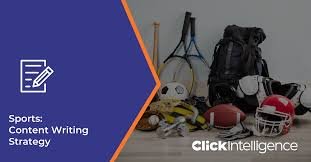Introduction
In the world of digital marketing, creating high-quality content is essential for engaging your audience and building trust. However, if your content isn’t optimized for search engines, it may not reach the audience you intend. Balancing SEO and content quality can be a challenge, but it’s entirely possible to write content that ranks well on Google while still providing value to your readers.
In this blog post, we’ll discuss how to optimize your content for SEO without compromising its quality. By following these strategies, you’ll ensure that your content is both discoverable and valuable to your target audience.
1. Start with Keyword Research
Keyword research is the foundation of any effective SEO strategy. However, simply stuffing your content with keywords will not only hurt your readability but also damage your SEO performance. Instead, use keyword research to understand the search intent of your audience and incorporate these keywords naturally into your content.
How to Do It:
Use tools like Google Keyword Planner, Ahrefs, or Ubersuggest to find relevant keywords in your niche. Focus on long-tail keywords (phrases with three or more words) because they are more specific and less competitive. Once you’ve identified the right keywords, incorporate them strategically into your content’s headings, body text, and meta tags.
Actionable Tip:
Include your primary keyword within the first 100 words of your content, but don’t over-optimize. Keyword stuffing can lead to a poor user experience and lower rankings.

2. Write for Your Audience First, Not Search Engines
While optimizing your content for SEO is important, you must never lose sight of your audience. Content that is written solely for search engines may rank well, but it won’t keep your readers engaged. Google’s algorithms are becoming increasingly sophisticated, and they prioritize user experience above all else.
How to Do It:
Focus on answering the questions your audience has and providing them with useful, informative, and engaging content. When you write content that is genuinely helpful to your readers, they will stay on your page longer, reducing bounce rates and increasing engagement—factors that positively influence SEO.
Actionable Tip:
Always ask yourself, “Does this content truly provide value to my audience?” If the answer is no, reconsider the approach. Your content should solve a problem or answer a question for your readers.
3. Optimize Your Headings and Subheadings
Headings and subheadings are essential for both readability and SEO. Well-structured content is easier for readers to scan and digest, and search engines use headings to understand the hierarchy and relevance of your content. By optimizing your headings, you can make your content more SEO-friendly while improving its readability.
How to Do It:
Use proper header tags (H1, H2, H3, etc.) to break up your content into clear, logical sections. Incorporate keywords into your headings and subheadings, but ensure they remain natural and make sense in the context of the content.
Actionable Tip:
For your H1 tag (the main title), make sure it includes your target keyword. Use H2 and H3 tags for subsections, and try to include related keywords or variations.
4. Prioritize Quality Over Quantity
When it comes to SEO, it’s not about how much content you produce—it’s about how valuable and relevant it is to your audience. While publishing frequently can be beneficial, it’s more important to ensure that every piece of content is well-researched, comprehensive, and engaging.
How to Do It:
Instead of churning out low-quality posts just for the sake of quantity, focus on creating long-form, in-depth content that addresses your audience’s pain points. High-quality content tends to earn backlinks, which are one of the most powerful ranking factors in SEO.
Actionable Tip:
Aim for content that is both thorough and well-written. A detailed, well-structured blog post will naturally attract more traffic and generate better engagement, helping to improve your SEO performance in the long run.

5. Optimize for Mobile and User Experience
Google prioritizes mobile-friendly websites in search results, and for good reason—mobile traffic has surpassed desktop traffic in many industries. Optimizing for mobile not only improves your SEO but also ensures your content is accessible to a wider audience.
How to Do It:
Ensure that your website is responsive and that your content is easy to read on mobile devices. This includes having a clean layout, legible font sizes, and easy navigation. Also, optimize your images to load quickly and ensure they display correctly on all screen sizes.
Actionable Tip:
Use Google’s Mobile-Friendly Test tool to check how well your content performs on mobile devices. If issues are found, consider working with a web developer to ensure your site is mobile-optimized.
6. Use Internal and External Links Strategically
Linking to other relevant content—both on your website (internal links) and authoritative external sources—improves the SEO and user experience of your content. Internal links help search engines understand the structure of your website and encourage readers to explore other related pages.
How to Do It:
When relevant, link to other pages on your site to encourage visitors to explore more of your content. Also, link to high-quality external resources to support your points and improve the credibility of your content.
Actionable Tip:
Don’t overdo it with links. Too many internal or external links can make your content feel cluttered. Use them sparingly and ensure that each link is relevant and adds value to your content.

7. Optimize Your Meta Descriptions and Title Tags
Meta descriptions and title tags may not directly impact rankings, but they influence click-through rates (CTR), which are a key ranking factor. Writing compelling meta descriptions and title tags can make your content more attractive in search results, driving more organic traffic to your site.
How to Do It:
Your title tag should include your primary keyword and accurately describe the content. Keep it under 60 characters to avoid truncation in search results. Meta descriptions should be concise (around 150-160 characters) and include keywords while making the content appealing to users.
Actionable Tip:
Write unique meta descriptions for every piece of content, and ensure they include a clear value proposition to encourage users to click.
Conclusion
Optimizing your content for SEO doesn’t mean sacrificing quality. By focusing on the needs of your audience, conducting thorough keyword research, and following best practices for on-page SEO, you can create content that ranks well and provides real value to your readers. Keep in mind that SEO is an ongoing process, so regularly analyze your content’s performance and adjust your strategy accordingly.
With the right balance of quality and optimization, you’ll not only improve your search rankings but also build a stronger relationship with your audience—one that lasts for the long haul.
Related Tags:
- SEO Content Optimization
- Content Writing Tips
- Keyword Research
- SEO Best Practices
- Mobile SEO
- On-Page SEO
- SEO Strategy
- Digital Marketing
- Content Creation
- Meta Descriptions













